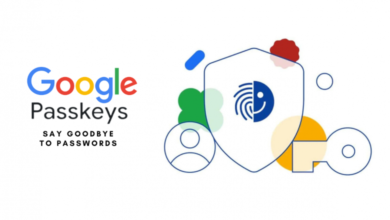
Unpacking Spoofing Attacks and How to Protect Against Them
As cyber threats evolve, one technique that continues to pose a significant risk to both individuals and organizations is spoofing. From fake emails to cloned websites, spoofing attacks come in many forms, all with the same goal: deceiving the victim into trusting a fraudulent source. Understanding how spoofing works and how to protect yourself is crucial in today’s digital world.
What is Spoofing?
Spoofing refers to any type of cyberattack where an attacker disguises themselves as a trusted source to trick a target into believing they are interacting with a legitimate entity. This can involve impersonating email addresses, websites, phone numbers, IP addresses, or even entire networks. The primary goal of spoofing attacks is to steal personal information, infect devices with malware, or gain unauthorized access to networks.
Here are some common types of spoofing attacks:
- Email Spoofing: Attackers forge email headers to make it appear as if a message is coming from someone trusted, such as a colleague, boss, or business partner, when in reality, it’s from a malicious source.
- Caller ID Spoofing: Attackers falsify the phone number displayed on a victim’s caller ID, making it appear as though the call is coming from a legitimate source, such as a bank or government agency.
- Website Spoofing (Pharming): Attackers create fake websites that resemble legitimate ones to trick users into entering sensitive information like login credentials or payment details.
- IP Spoofing: Hackers disguise their device’s IP address to impersonate another machine, typically to bypass network security measures or launch a denial-of-service (DoS) attack.
- DNS Spoofing (DNS Cache Poisoning): Attackers manipulate the Domain Name System (DNS) to redirect users to malicious websites, even if they type in the correct web address.
- ARP Spoofing: Hackers send fake ARP (Address Resolution Protocol) messages to link their MAC address with the IP address of another device, allowing them to intercept or modify network traffic.
Real-World Examples of Spoofing Attacks
1. The 2013 PayPal Email Spoof
In one notable example of email spoofing, attackers sent thousands of PayPal users emails that appeared to come from PayPal itself. The email informed recipients that their account had been suspended due to unusual activity and provided a link to restore access. The link, however, led to a phishing site designed to steal login credentials and payment information. Despite the convincing look of the email, subtle discrepancies—such as the email domain and poor grammar—tipped off vigilant users. Nonetheless, many unsuspecting users fell victim to the scam.
2. Apple ID Phishing Scam (Website Spoofing)
In a widespread attack, hackers created a fake Apple website that mimicked the official Apple login page. Users who received phishing emails claiming issues with their Apple ID were directed to this fake site to “verify” their credentials. The attackers collected usernames and passwords, which were then used to access victims’ Apple accounts, steal payment information, and even remotely wipe their devices.
3. Targeted Spear Phishing of Ukrainian Officials (DNS Spoofing)
In 2017, a group of hackers known as Fancy Bear used DNS spoofing to target Ukrainian government officials. Attackers intercepted DNS requests from officials trying to access their email and rerouted them to fake login pages. Officials who entered their credentials unknowingly gave hackers access to their government emails. This attack was particularly sophisticated, as it did not rely on tricking users via phishing emails but instead manipulated the infrastructure that translates URLs into IP addresses.
4. Caller ID Spoofing: The IRS Phone Scam
A highly prevalent form of caller ID spoofing involves scammers posing as IRS agents, calling victims and demanding immediate payment for back taxes. The phone number displayed on the victim’s caller ID is manipulated to appear as though it’s coming from the IRS. These scammers often use fear tactics, threatening arrest, fines, or lawsuits if the payment isn’t made immediately. The IRS itself has warned the public about these scams, reminding people that they would never demand payment over the phone.
5. Sony PlayStation DDoS Attack (IP Spoofing)
In 2014, the Sony PlayStation Network was targeted by a massive distributed denial-of-service (DDoS) attack, overwhelming its servers and causing service outages for several days. The attackers used IP spoofing to hide the source of the attack, making it difficult for Sony’s security team to track the origin. IP spoofing allowed the attackers to send requests that appeared to come from thousands of different machines, masking the actual attackers behind the attack.
6. 2010 Brazilian Banking DNS Spoofing
In one of the most notorious DNS spoofing attacks, Brazilian hackers successfully redirected users from legitimate banking websites to malicious copies. When users tried to access their bank accounts, they were unknowingly entering their login details into fraudulent sites. The attackers intercepted credentials, drained bank accounts, and caused widespread financial losses for both individuals and banks. This attack highlighted the vulnerabilities in poorly secured DNS servers and the need for enhanced encryption.
Aslo Check
Why is Spoofing So Dangerous?
Spoofing attacks are especially dangerous because they exploit trust. When users believe they are interacting with a familiar and legitimate entity, they are more likely to share sensitive information or perform actions they otherwise wouldn’t. Here’s why spoofing can be so damaging:
- Hard to Detect: Many spoofing attacks—especially DNS, IP, and ARP spoofing—are invisible to the average user. Victims may only realize they’ve been attacked after the damage has been done.
- Data Theft: Spoofing is often used to steal sensitive information, such as passwords, banking details, or personal data, which can be sold on the dark web or used for identity theft.
- Disruption: Attacks like IP spoofing and DNS spoofing can disrupt businesses by overwhelming servers or redirecting critical traffic to malicious sites.
- Infiltration: Once attackers gain access through spoofing, they may have entry into more secure networks or systems, leading to larger data breaches or more devastating attacks.
How to Mitigate Spoofing Attacks
Spoofing is a serious threat, but there are measures individuals and organizations can take to reduce the risk. Here are the most effective strategies for mitigating spoofing attacks.
1. Use Email Authentication Protocols
Email spoofing can be mitigated through the use of authentication protocols that verify the sender’s identity. These include:
- SPF (Sender Policy Framework): SPF allows domain owners to specify which IP addresses or mail servers are allowed to send emails on behalf of their domain.
- DKIM (DomainKeys Identified Mail): DKIM adds a cryptographic signature to emails, ensuring that the message has not been altered and verifying that it came from the authorized domain.
- DMARC (Domain-Based Message Authentication, Reporting & Conformance): DMARC builds on SPF and DKIM, providing a way for domain owners to specify how emails that fail these checks should be handled (e.g., rejected, quarantined).
2. Implement SSL/TLS Certificates
To prevent website spoofing, ensure that all legitimate websites are secured with SSL/TLS certificates. This creates a secure, encrypted connection between a user’s browser and the web server, and legitimate sites will display “HTTPS” in the URL bar. Always double-check the URL before entering sensitive information.
3. Verify Phone Calls
Caller ID spoofing can be mitigated by never providing sensitive information based on a phone call alone. If you receive a call from someone claiming to be from a legitimate organization (e.g., a bank or government agency), hang up and call back using a number from the official website. This ensures that you’re talking to the real entity.
4. Use Multi-Factor Authentication (MFA)
Even if login credentials are compromised through spoofing, multi-factor authentication adds an additional layer of security. MFA requires users to provide two or more verification factors—such as a password and a one-time code sent to a mobile device—before they can log in.
5. Deploy Anti-Spoofing Technologies
Organizations can protect their networks by deploying anti-spoofing technologies, including:
- Network Access Control (NAC): NAC tools can help prevent ARP spoofing by enforcing strict access control rules, only allowing devices that meet security requirements to access the network.
- Intrusion Detection Systems (IDS): IDS solutions can monitor network traffic for unusual patterns that may indicate spoofing, such as sudden changes in traffic flow or repeated attempts to impersonate an IP address.
- DNSSEC (Domain Name System Security Extensions): DNSSEC adds an additional layer of security to DNS requests, ensuring that users are directed to the correct IP address. It helps prevent DNS spoofing by cryptographically signing DNS records.
6. Educate Users on Spoofing Tactics
Awareness and training are key to reducing the risk of falling for spoofing attacks. Teach employees and individuals to recognize the signs of spoofing, such as:
- Emails with slight domain misspellings (e.g., using “paypa1.com” instead of “paypal.com”).
- Requests for sensitive information over the phone or email without prior verification.
- Suspicious pop-up warnings on websites that appear legitimate.
Spoofing is a versatile and dangerous attack method used by cybercriminals to deceive individuals and organizations. By exploiting trust, attackers can steal sensitive information, disrupt services, and gain unauthorized access to critical systems. To stay safe, it’s essential to implement technical safeguards, such as email authentication protocols, SSL certificates, and DNSSEC.









